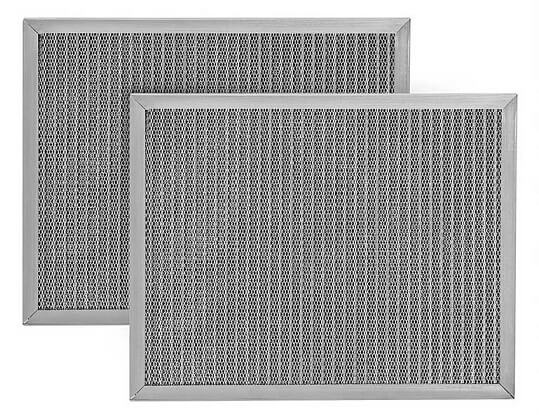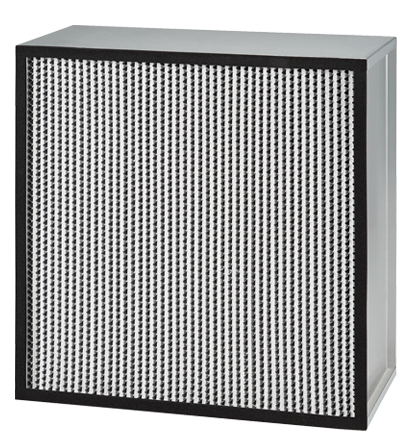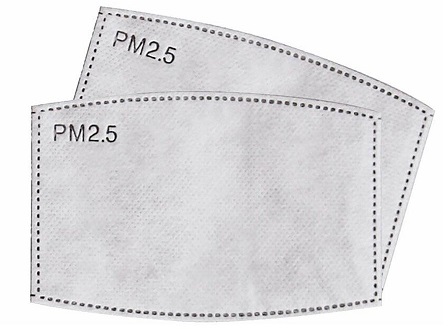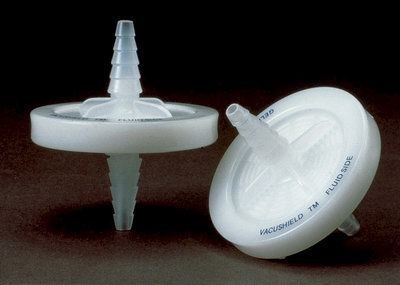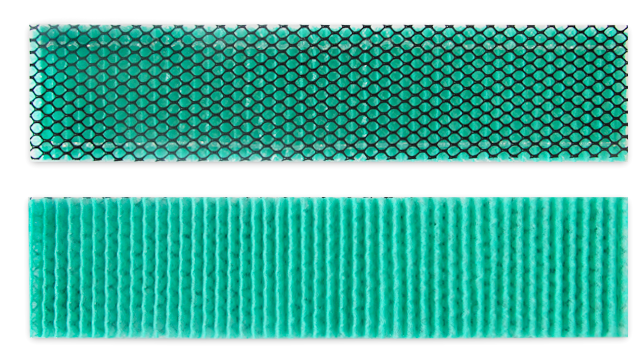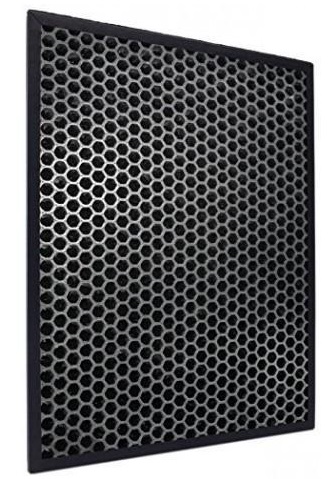AC filters are an integral component of an air conditioner as they remove pollutants, pollen, and dust to disperse only clean air.
Overtime, these filters may get clogged and become ineffective which can affect the indoor air quality and AC functioning as well.
The appropriate solution is – to replace the AC filters, especially if it has been while.
But this process isn’t as simple as it sounds – because there are different types of filters to choose from. If you are wondering which one you have to choose, then read this article carefully to make an informed choice.
In this blog, we shall discuss the AC filter types, their efficiency, maintenance, working mechanism and several other information.
How does an Air Filter Function in an AC?
The air filter works by removing dust, dirt, impurities, and other airborne particles from the air that pass through these filters. When these impurities congest the filters, it obstructs the airflow, reduces the cooling capacity and affects the working of the air conditioner.
Clogged filters will hamper the delivery and circulation of cool air. As a result, your air conditioner consumes more power than needed to deliver the cool air, thereby contributing to high electricity bills.
If you do not clean the filters regularly or replace them, it can lead to issues with the motor and other parts. Sometimes, it may even cause a shutdown of your system. Hence, it is best advisable to clean or change the filter every three months.
What are the Types of AC Filters?
Now that we know how an air filter works in an AC let us see the common types of air filters used in an air conditioner.
- Electrostatic Filters
- HEPA Filter
- PM 2.5 Filter
- Anti-Bacterial Filter
- Catechin filter
- Activated Carbon Filter
- Anti-VOC Filter
- Nano Silver Filter
We will discuss in detail each type, the working mechanisms, the pros and cons, and also how to clean them.
1. Electrostatic Filters
As the name suggests, these filters use an electrostatic charge to attract dust and other airborne particles like a magnet. They use small cotton and paper fibers to create static electricity that attracts the particles and stops them from circulating in the room.
Another advantage of using electrostatic filters for your ACs is that they come as disposable or reusable types. When changing the filters, you can either wash and reuse them or discard them and replace them with new ones.
Let us have a look at the advantages and disadvantages of electrostatic filters.
Pros:
- Electrostatic filters are cost-effective filters available in the market.
- They improve indoor air quality by maximizing filtration.
- They are very easy to clean and easy to maintain.
- It does not need frequent replacement.
- The filters prevent the accumulation of dust particles on the AC coils and other heating components.
- They are environmental-friendly.
- They have a MERV (Minimum Efficient Rating Value) rating of around 5 or 6.
- They can effectively remove pollutants that are up to 10 PM.
- As these filters are reusable, you can save money in the long run.
Cons:
- Cleaning the filters is a time-consuming process.
- Clogged electrostatic filters tend to block airflow more when compared to other filters.
- It can be challenging to clean the particles stuck inside the duct line due to the static electricity.
- They are not ideal for people with asthma or allergies.
- Requires regular maintenance, which is monthly once.
How to Clean an Electrostatic Filter?
Electrostatic filters require regular cleaning, i.e., once every four to six weeks. Since cleaning these filters is a time-consuming process, we recommend you do it in a day when you are free. Below are the steps to help you with the cleaning process of electrostatic filters.
- The very first step is to switch off the air conditioner and unplug it before you get started with the cleaning process.
- The next step in the process is to locate the filters and remove them. Refer to a user manual to locate and carefully remove the air filter from the filter chamber.
- Use a garden hose with a power spray nozzle to spray water on the filters in the opposite direction.
- To clean the filter, make sure you use high pressure and spray it on the opposite side of the filter.
- Continue doing this until the surface area of the filter is clean.
- Spray mild dishwashing soap solution on both sides of the filter and allow it to sit for about five minutes.
- Now rinse the filter by repeating step 3 of the process.
- Let the water drain from the filter and allow it to dry to ensure there is no water dripping from it.
- Once the filters are completely dry, replace them in your air conditioner.
- Repeat this process every month to ensure the effective functioning of the filters.
2. HEPA Filters
HEPA or High-Efficiency Particulate Air Filters are other commonly used filters in air conditioners. Specially designed for removing even the invisible particles in the air, these filters are the most effective. They are capable of screening up to 99.97% of contaminants like dust, pollen, bacteria, mould, etc.
Let us have a look at the advantages and disadvantages of HEPA filters.
Pros:
- HEPA filters can capture 99.97% of pollutants.
- They can remove smaller particles that are 0.3 microns and above.
- Ideal for patients with recurring allergies.
- These filters do not release the collected contaminants back into the air.
Cons:
- HEPA filters cannot trap pollutants, gases, chemicals, and odours.
- Replacing the HEPA filter can be a costly affair.
- Not all HEPA filters are washable.
How to Clean a HEPA Filter?
Usually, HEPA filters are for replacing. However, some models come as reusable. Let us learn how to clean both washable and permanent HEPA filters.
Below are the Steps for Cleaning a Washable HEPA Filter:
- Always check whether your HEPA filter is washable or not. You can confirm the same by seeing the user manual.
- Switch off the air conditioner and unplug before you get started with the cleaning process.
- The next step in the process is to locate the filters and remove them. Refer to a user manual to locate and carefully remove the air filter from the filter chamber.
- Now clean the filter using cold water. However, make sure you do not touch the filter material but allow it to come in contact with the water only.
- After you finish cleaning, allow it to dry completely.
- Once it is dry, reinstall it.
Below are the Steps for Cleaning a Non-Washable or Permanent HEPA Filter:
- Switch off the air conditioner and unplug it.
- Refer to a user manual to locate and carefully remove the air filter from the filter chamber.
- Clean the filter gently using a vacuum cleaner to remove dust and debris.
- Clean both sides of the filter.
- Make sure you do not use water for such types of filters.
- After cleaning, reinstall them in the air conditioner unit.
3. PM 2.5 Filter
PM 2.5 filter means Particulate Matter 2.5. These filters are capable of removing fine dust particles that are less than 2.5 microns. These filters comprise five different layers, wherein each layer is of a different material.
The 1st and 5th layers made of spun-bound polyester material, effectively filter out large particles. The third layer made of the activated carbon layer easily traps particles. The 2nd and 4th layers made of the melt-down polypropylene materials successfully filter out smaller particles.
These are best suitable for filtering particles that are very tiny and can easily enter the lungs, causing health problems. Long-term exposure to PM 2.5 pollutants can lead to chronic bronchitis and even worsen the health condition of those with asthma or bronchitis.
Let us have a look at the advantages and disadvantages of PM 2.5 filters.
Pros
- PM 2.5 filters can remove minute pollutants
- They are less expensive when compared to HEPA filters.
- They improve the quality of indoor air.
Cons
- These filters cannot deal with impurities that are less than 2.5 microns.
- They are not washable.
How to Clean a PM 2.5 Filter?
Since PM 2.5 filters are not washable, we do not recommend cleaning them. Even after you wash them, there are high chances for the pollutants to remain in the filter. This is because the pollutants are less than 2.5 microns in size, and you can hardly notice them. It is best advisable to replace the filters as suggested in the user manual.
4. Anti-Bacterial Filter
An anti-bacterial filter is one of the prominent air purifying filters used in air conditioners today. Specially designed to trap the airborne contaminants, these filters efficiently remove the particulates and harmful irritants from the air. They further enhance the lifespan of your AC unit and also improve their cooling performance.
The best thing about the anti-bacterial filter is that you can use them to complement other kinds of filters like the HEPA.
Let us have a look at the advantages and disadvantages of anti-bacterial filters.
Pros:
- They can effectively trap airborne contaminants like dust, pollen, and irritants.
- Regular use of these filters improves indoor air quality.
- An anti-bacterial filter enhances the lifespan of your AC.
- It improves the cooling performance of your AC further, reducing the electricity bills.
- It helps in removing bacteria and viruses.
- These filters are economical to use.
- They are easy to install and easy to clean.
Cons
- Anti-bacterial filters have a very short lifespan of about three to four months.
- They need frequent replacement.
How to Clean an Anti-bacterial Air Filter?
Since the anti-bacterial filters have a short lifespan, it is advisable to replace them as needed. However, you can clean them using a vacuum cleaner and reuse them between the replacement schedule.
If you want to wash them, you can follow this. Remove the filters and wash them under running water. Dry them completely before reinstalling them after completely dry. We recommend you replace them once every three to four months.
5. Catechin Filter
Catechin filter is yet another type of commonly used AC filter. Usually made from a green tea extract, this filter helps to eliminate bacteria and preventing other unpleasant odours. It has anti-bacterial and anti-viral, and anti-dust properties.
Catechin filters are ideal for asthmatic patients as they easily remove dust mites, the smell of tobacco smoke and paints, and other common pollutants.
Let us have a look at the advantages and disadvantages of catechin filters.
Pros
- These filters remove terrible odours and smells of tobacco smoke, paints, and others.
- They trap dust mites, microbes, and other bacteria.
- They are ideal for people with asthma.
Cons
- Catechin filters are comparatively expensive.
- Since it is a new technology, it requires more research to prove its efficacy.
How to Clean a Catechin Air Filter?
Catechin filters require regular cleaning, i.e., once every two weeks. Below are the steps to help you with the cleaning process of catechin air filters.
- Remove the catechin air filter by opening the front panel of the air conditioner unit.
- Use a vacuum cleaner to remove the dirt from the filter.
- If the dirt is noticeable on the filters, wash them using a solution of mild soap detergent diluted with lukewarm water.
- After washing, dry the filter completely in the shade.
- After it is dry, reinstall the catechin filter.
When the filter’s capacity gets lowered because of dirt, microbes, etc., then it is time for a replacement. Ideally, you need to replace them about once every four months. This is how you can replace the air filter:
- Remove the catechin air filter by opening the front panel of the air conditioner unit.
- Remove the air cleaning filter and replace it with a new one.
- Reinstall the catechin air filter and close the front panel of the AC unit.
6. Activated Carbon Filter
Activated carbon filter, as the name suggests it contains activated carbons. Activated carbon filters are usually small granular carbon pieces that enable the filter to adsorb contaminants and allergens. The adsorption technique captures and removes impurities and harmful contaminants from the air that can be hazardous to your health.
You can use the activated carbon filters in conjunction with HEPA and PM 2.5 filters to trap dust, mould, smoke, pet hair, and other allergens and impurities.
We all know that carbon acts as a catalyst to remove odours. The activated carbon filters can effectively eliminate unpleasant odours from the indoor air, keeping it fresh.
The combination of activated carbon and HEPA filters can successfully trap 99.97% of small particles that are 0.3 microns and above. They can also seize larger particles, including the spores. These filters are best suitable for people with allergies and respiratory problems.
Let us have a look at the advantages and disadvantages of activated carbon filters.
Pros
- Activated carbon filters are capable of trapping VOCs and harmful gases.
- They remove terrible and unpleasant odours from the air.
- They eliminate dangerous pollutants like ozone, carbon monoxide.
Cons
- Activated carbon filters can trap only chemicals attracted to carbon.
- They cannot eliminate other pollutants like fluorides, sodium, etc.
- They have a very short lifespan.
- They need frequent replacement.
- They are not capable of trapping bacteria.
How to Clean an Activated Carbon Air Filter?
Since activated carbon filters have a very short lifespan of about 3-4 months. Hence, it is advisable to replace them after the recommended period. However, if it is washable, as mentioned by the manufacturer, you can clean it by following the below steps:
- Remove the activated carbon air filter by opening the front panel of the air conditioner unit.
- Prepare a cleaning solution by mixing one cup of soap detergent into a bucket of hot water.
- Soak the filter in the solution and allow it to sit for about 15 minutes.
- Shake it from side-to-side and back to front while submerging it in the solution to remove the dust and dirt from it.
- Remove the carbon filter from the bucket and rinse it off under hot water.
- After washing, dry the filter completely in the sun.
- After it is dry, reinstall the activated carbon filter.
7. Anti-VOC Filter
VOC stands for Volatile Organic Compounds that are gases emitted from paints, fuel burning, varnishes, detergents, etc. Some people can be sensitive to VOC, causing them headaches or nausea.
Many VOCs, when combined with nitrogen oxides, can be hazardous to health and the environment. There are certain VOCs well-known for showing a huge impact on the liver, kidney, and nervous system.
When you use anti-VOC filters in air conditioners, they help in eliminating toxic VOCs and removing impurities and hazardous gases from the air.
Let us have a look at the advantages and disadvantages of anti-VOC filters.
Pros
- Anti-VOC filters trap VOCs and prevent their recirculation.
- They remove impurities and gases that are capable of damaging the liver, kidneys, and nervous system.
Cons
- They have a very short lifespan.
- They cannot treat PM 2.5 pollutants.
How to Clean an Anti-VOC Air Filter?
Anti-VOC filters are not recommended for cleaning or reusing. This is because even if you wash them you cannot get rid of the VOCs stuck inside the filters. Hence, it is best advisable to change them very frequently, i.e., for every four to six months.
8. Nano Silver Filter
Nanosilver is synonymous with anti-bacterial technology. A nano silver filter uses the same technology to destroy the cells in bacteria. It continuously releases silver ions to seize and destroy the bacteria in the air. Not only that, but it also inhibits microbe’s growth, including bacteria, virus, fungi, and spores.
Samsung, the leading electronics manufacturer, claims that the silver nanotechnology can sterilize over 650 types of bacteria, guaranteeing 99.99% disinfection of filtered air.
Some Indian AC manufacturing brands like Voltas and BlueStar also use the nanosilver filter in their cooling units.
Let us have a look at the advantages and disadvantages of nano silver filters.
Pros
- They are a perfect companion for activated carbon filters.
- They remove bacteria and other harmful microbes from the air.
- Nano silver filters inhibit the further growth of bacteria.
- They remove pet dander, dust, pollen, and other pollutants.
- They occupy minimum space.
- They can eliminate 650 types of bacteria and disinfect 99.99% of the filtered air.
Cons
- Excessive exposure to silver ions can make the bacteria resistant to it.
- It has some environmental concerns associated with it because of the toxic effect.
How to Clean a Nano Silver Air Filter?
All nano silver air filters are self-cleaning filters; hence you don’t have to clean them. However, you can replace them every three to four months depending on the usage or as suggested in the user manual.
Conclusion
I hope this article gave you enough insights into the types of air filters used in an air conditioner. Next time, when you want to clean or replace the filter, make sure you follow the above steps.
Since this article also explains an air filter is best suitable, make sure you purchase one accordingly.
If you need more information on air filters, do write to us in the comments section below. We would be happy to help you with all that you need.

